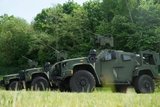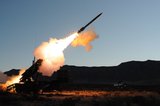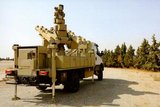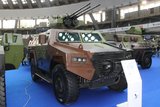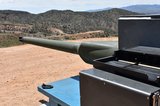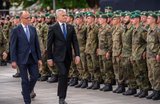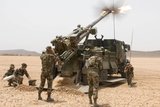Australia invests $1.4 billion in additional AMRAAM buy
The NASAM system fires an AIM-120 Advanced Medium Range Air to Air Missile during it's first ever Australian live-fire at Woomera Test Range. (Photo: Australian Department of Defence)
Australia has signed off on its buy of advanced medium-range missiles (AMRAAM) to strengthen its defence force’s air defence capabilities, investing up to A$2.12 billion (US$1.4 billion) in additional stocks of various missiles.
In April 2025, the US government approved a Foreign Military Sale (FMS) of AMRAAM to the Australian Defence Force (ADF) worth $1.04bn (A$1.8bn). The quantity disclosed for was around 200 AIM-120C-8 AMRAAMs and a similar amount of AIM-120D-3s.
Both RTX missile variants, AIM-120D-3 and AIM-120C-8, are precise target strike missiles. The recent acquisition aligns with a key priority of Australia’s 2024 National Defence Strategy, according to the
Already have an account? Log in
Want to keep reading this article?
More from Land Warfare
-
![Serbia looks to balance lighter platforms and heavier calibres]()
Serbia looks to balance lighter platforms and heavier calibres
Even small tactical vehicles can benefit from more powerful offensive and defensive armament, but as recent developments at Yugoimport demonstrate, there are still limitations to the sophistication of what can be fielded.
-
![Next-generation gun set to boost US Army combat vehicle capabilities]()
Next-generation gun set to boost US Army combat vehicle capabilities
The 50mm main weapon on the XM30 Mechanized Infantry Combat Vehicle currently being competed for by industry will offer a step-change in firepower and targeting over the in-service M2 Bradley.
-
The year ahead: Major trends and forecasts for the land domain in 2026
2025 was a busy year for the land domain and 2026 looks set to be just as big. Shephard’s Dr Peter Magill analyses some of the major trends we are likely to see in the year ahead.
-
![Land forces review: howitzers in the spotlight and Germany spends big to close the year]()
Land forces review: howitzers in the spotlight and Germany spends big to close the year
December saw several milestones on the howitzer front with billions of dollars worth of orders placed and Germany committing to more 6×6 and 4×4 vehicles. Taiwan was also approved for equipment orders worth $11 billion even as the year came to an end with China encircling the country as part of an exercise.








